Is White Rice Healthy? Key Insights On Risks And Benefits
Friend or a foe? Get a better understanding of the rice’s impact on health.

Image: Shutterstock
Is white rice healthy? Are you concerned about the purported negative effects of white rice? Well, what if we told that white rice benefits you in multiple ways? Yes, you read it right. Over two thirds of people globally are estimated to consume white rice regularly (1). Japanese, the longest living people in the world, consume white rice as a major part of their diet (2). While white rice has received some flak, it also may benefit your health. Continue reading to know more about the benefits of white rice.

In This Article
What Is White Rice?
White rice is nothing but milled rice with its husk, bran, and germ removed. This process alters the flavor and appearance of the rice, thereby extending its shelf life. After milling, the rice is usually polished, giving you the shiny and bright white rice that you see in the market.
The milling process cleans the rice and removes the husks off the grains, giving us brown rice. All the incredible brown rice health benefits that you hear about, comes from retaining the bran and germ, making it a rich source of fiber and essential nutrients (3). However, further polishing of brown rice removes these nutrients, resulting in white rice.
Without the bran and the germ, the grain loses 25% of its protein and 17 other key nutrients (4). The processors sure add the lost nutrients back to the refined grains. But, you will be consuming processed and refined rice.
Studies show that individuals who consume white rice at least five times a week are 20% more likely to develop type 2 diabetes (5). One major reason people prefer white rice is that it tastes good. White rice is also quicker to cook compared to other rice varieties (including brown rice).
 Did You Know?
Did You Know?But, are these reasons justified? How bad is white rice really?
Why White Rice Is Possibly Bad
1. May Elevate Diabetes Risk

The biggest drawback of white rice could be the steep increase in the postprandial1 blood glucose levels it causes (6). White rice also has a higher glycemic index (over 65), which can further increase diabetes risk.
Studies also show a 23% increased risk of diabetes with an additional serving of white rice every day. This is because the processing of white rice removes most of the fibers and nutrients from the grain that possess anti-diabetic properties (7).
The studies conclude that replacing white rice with whole grain carbohydrates (including brown rice) can be one of the strategies to cut diabetes risk.
This is the case not just with white rice. Consuming more of refined foods, including white bread and other sugary foods, can increase diabetes risk (8).
A prospective study was conducted with 132,373 individuals aged 35-70 years to study the association of white rice intake with incident diabetes. During the follow-up period, 6,129 individuals were diagnosed with incident diabetes. The study concluded that the intake of more than 450g/day of white rice led to incident diabetes.
2. May Cause Metabolic Syndrome2
A Korean study shows that individuals consuming white rice for longer periods could be at a higher risk of metabolic syndrome (9). This was particularly true in the case of post-menopausal women, where women who ate white rice were at a higher risk of metabolic syndrome than women consuming rice with multi-grains. Women who consumed white rice also showed signs of central obesity and dyslipidemia3.
In another Korean study, high consumption of white rice put adolescent girls at an increased risk of metabolic syndrome (10).
3. May Cause Weight Gain
Dietary patterns predominantly including white rice were shown to increase obesity rates (11). But, some studies could establish no significant link between white rice intake and obesity – and warranted further research (12).
However, white rice is a refined grain. Studies state that substituting refined grains with whole grains can promote healthy weight maintenance (13).
So, also consider white rice substitutes that provide more nutritional value and promote long-term health while making healthier food choices. Scroll down to know more.
Alternatives To White Rice
If you want a healthy alternative to white rice, consider using brown rice, barley, or quinoa. Quinoa is high in fiber and antioxidants and provides all nine necessary amino acids, making it a complete protein. Soluble fiber, which is abundant in barley, promotes heart health and helps control blood sugar levels. When compared to white rice, brown rice has more vitamins and minerals, a greater fiber content, and is digested more slowly, which helps you feel fuller for longer. These whole-grain substitutes are great alternatives to white rice since they are lower in glycemic index, higher in nutrients, and offer longer-lasting energy.
These are the reasons you need to reduce your intake of white rice – if you are consuming too much of it already. But then, could white rice be good too? If yes, how?
How Can White Rice Be Good For You?
White rice can be easy on your stomach. This is probably the only way it can be good for anyone, especially in certain cases. Many cuisines around the world, especially those in Asia, the Middle East, and Latin America, place a high cultural significance on rice. Rice is often a staple item that serves as the basis for traditional meals in many areas. Rice can supply essential vitamins and minerals when consciously eaten as part of a balanced diet. By combining rice with veggies, lean meats, and healthy fats, you can make a complete meal that will benefit your general health without raising your blood sugar levels too much.
White rice is an important component of the BRAT diet, which consists of bananas, rice, applesauce, and toast. This diet is recommended following a stomach illness or diarrhea (14).
White rice plays an important role in treating diarrhea symptoms. It is low in fiber and helps in making the stool firmer (15). The low fiber content in white rice also means your stomach doesn’t have to do a lot of work to digest it if one has an upset stomach.
White rice is easier to digest. It can ease the uncomfortable symptoms of digestive issues like Crohn’s disease, inflammatory bowel disease, and ulcerative colitis. Being low in fiber, it reduces the load on the digestive tract and allows it to rest and recover.
 Quick Tip
Quick TipBut, otherwise, brown rice is a great substitute for white rice. It is richer in fiber and other essential nutrients. The following table contains the average amount of nutrients each rice type offers for every 100 grams (3.5 ounces).
| Nutrient | Brown Rice* | White Rice** |
|---|---|---|
| Thiamin | 0.322 mg | 0.09 mg |
| Niacin | 5.99 mg | 1.25 mg |
| Vitamin B6 | 0.132 mg | 0.052 mg |
| Manganese | 2.84 mg | 0.892 mg |
| Magnesium | 124 mg | 22.9 mg |
| Phosphorus | 319 mg | 94 mg |
| Iron | 1.5 mg | 0.22 mg |
| Zinc | 1.91 mg | 1.19 mg |
*Flour, rice, brown, USDA Database**Flour, rice, white, unenriched, USDA Database
Brown rice has been found to fight inflammation as well. It was also found to lower blood pressure levels, as opposed to excess intake of white rice (16).
Long-term intake of brown rice was also associated with improved metabolic parameters and endothelial4 function (17).
An important point to be noted about brown rice is its arsenic content. Arsenic is a heavy metal naturally present in the environment, but it has been increasing due to rising pollution levels. Arsenic accumulates in the bran of the rice grain, which is what brown rice has (and white rice doesn’t). Excess intake of arsenic may cause cancer.
By excess, we mean several servings of brown rice every single day. If you make brown rice a moderate part of a varied diet, there is nothing to worry about! Remember – balance is key.
The simplest way to absorb all the goodness of white rice is to add them to your diet. Scroll down to find out how.
Rice Recipe
Vegetable Fried Rice
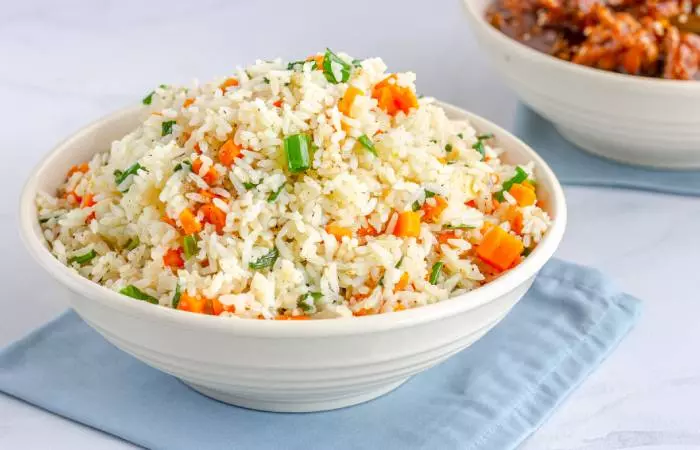
What Do You Need
- 2 cups of white rice, cooked
- 1 cup of mixed vegetables
- 2 eggs, beaten
- 3 tablespoons of soy sauce:
- 2 tablespoons of vegetable oil
- 1 onion, chopped
- 2 cloves of garlic, minced
- Salt and pepper to taste
- 1 cup of green onions
Procedure
- Heat oil in a large skillet or wok over medium-high heat.
- Add chopped onions and minced garlic. Sauté until onions are translucent.
- Push the onions and garlic to one side of the pan, and pour the beaten eggs into the other side. Scramble the eggs until cooked.
- Add mixed vegetables to the pan and stir-fry until they are tender yet crisp.
- Add the cooked rice to the pan and pour soy sauce over it. Stir everything together until well combined.
- Season with salt and pepper to taste.
- Garnish with chopped green onions for a fresh flavor and serve it hot.
Now that you have a rice recipe to try, here are some practical tips to enhance your cooking technique and retain more nutrients while preparing white rice.
Practical Tips For Cooking White Rice
The following tips may help you enhance the texture and nutritional content of white rice:
- Rinsing the rice before cooking helps remove excess starch, preventing it from becoming too sticky and improving its texture.
- When cooking white rice, a typical ratio is one part rice to two parts water. Depending on the type of rice and the desired texture, slightly alter the proportion.
- When cooked, a pinch of salt improves the rice’s flavor without requiring additional fats or seasonings.
- Once you have the water boiling, lower the heat and cook the rice. This keeps more nutrients in the rice and helps it cook more evenly.
- Once the rice is cooked, remove it from the heat and let it rest, covered, for about 5 to10 minutes. This allows the rice to firm up and absorb any remaining moisture.
What’s The Takeaway?
White rice has earned a bad reputation for being linked to type-2 diabetes, metabolic syndrome 2, and weight gain. However, certain factors make white rice healthy, which few people are aware of. It is ideal for those with stomach issues or diarrhea, as it does not bother the stomach much. As it is easily digestible, it may also help reduce symptoms of Crohn’s disease, ulcerative colitis, and inflammatory bowel disease. However, brown rice is always considered a better substitute for white rice as it is more nutritious and rich in fiber.
Glossary
- Postprandial – The period after a meal
- Metabolic Syndrome – Also called Syndrome X, metabolic syndrome is a cluster of risk factors including high levels of blood pressure and blood sugar, unhealthy cholesterol levels, and abdominal fat
- Dyslipidemia – Abnormally high blood cholesterol levels
- Endothelial – Relating to the thin layer of cells lining the blood vessels, heart, and other body cavities
Frequently Asked Questions
How much rice should I eat a day?
Eating 1-3 cups of rice per day is generally considered safe for daily consumption.
Is it good to eat rice at night?
Although there is no potential harm in eating rice at night, it is generally advised not to consume high-carbohydrate foods at night as they are not easy to digest and may spike blood glucose levels if consumed in excess.
What happens if I stop eating rice for a month?
Rice is a carbohydrate-rich food. When you stop eating it for a month, it creates a calorie deficit and may cause weight loss.
What can I replace white rice with?
Quinoa, barley, whole-wheat couscous, shirataki rice, and farro are a few healthy substitutes for rice.
Is roti better than rice?
Yes, roti is a better choice compared to rice. It is rich in protein and fiber and keeps you fuller for longer.
Is oatmeal better than rice?
Yes, oatmeal is a better choice compared to rice. It is loaded with fiber, vitamins, and antioxidants that help promote overall health.
Key Takeaways
- White rice is milled rice that undergoes polishing to enhance its shelf life and appearance.
- Consuming white rice may increase the risk of getting diabetes, metabolic syndrome, and weight gain.
- However, it can help improve diarrhea symptoms and is easier to digest.
- You may combine white rice with protein sources like chicken, beans, or tofu, along with a variety of vegetables to boost the nutritional value of your meal.
Watch the following video to get a better understanding of the debate about the healthiness of white rice. The video also sheds light on its nutritional value and its impact on health to help you make informed choices.
References
- “Rice”. ScienceDirect, Academic Press.
- “The role of the Japanese Traditional Diet…”. Nutrients, US National Library of Medicine.
- “Processing conditions, rice properties…”. International Journal of Environmental Research and Public Health, US National Library of Medicine.
- “Whole grains – Finding the health benefits…”. Washington State Department of Health.
- “Why billions eat unhealthy rice and shouldn’t”. Institute for Policy Studies.
- “White rice, brown rice, and risk of type 2…”. Archives of Internal Medicine, US National Library of Medicine.
- “White rice intake and incidence of…”. BMC Public Health, US National Library of Medicine.
- “Think twice before eating white rice?”. News in Health, US Department of Health and Human Services.
- “Rice-eating pattern and the risk of metabolic…”. BMC Public Health, US National Library of Medicine.
- “Metabolic syndrome risk factors are…”. British Journal of Nutrition, Cambridge University Press.
- “A rice-based traditional dietary pattern is…”. Journal of the Academy of Nutrition and Dietetics, US National Library of Medicine.
- “The association between dietary intake of white…”. ARYA Atherosclerosis, US National Library of Medicine.
- “Substituting whole grains for refined grains…”. The American Journal of Clinical Nutrition, US National Library of Medicine.
- “Diarrhea”. National Cancer Institute.
- “Diarrhea”. National Center for Biotechnology Information.
- “Effect of brown rice consumption on…”. International Journal of Preventive Medicine, US National Library of Medicine.
- “Effects of the brown rice diet on visceral…”. The British Journal of Nutrition, US National Library of Medicine
Read full bio of Girlene Coughlin
Read full bio of Ravi Teja Tadimalla
Read full bio of Arshiya Syeda
Read full bio of Aparna Mallampalli






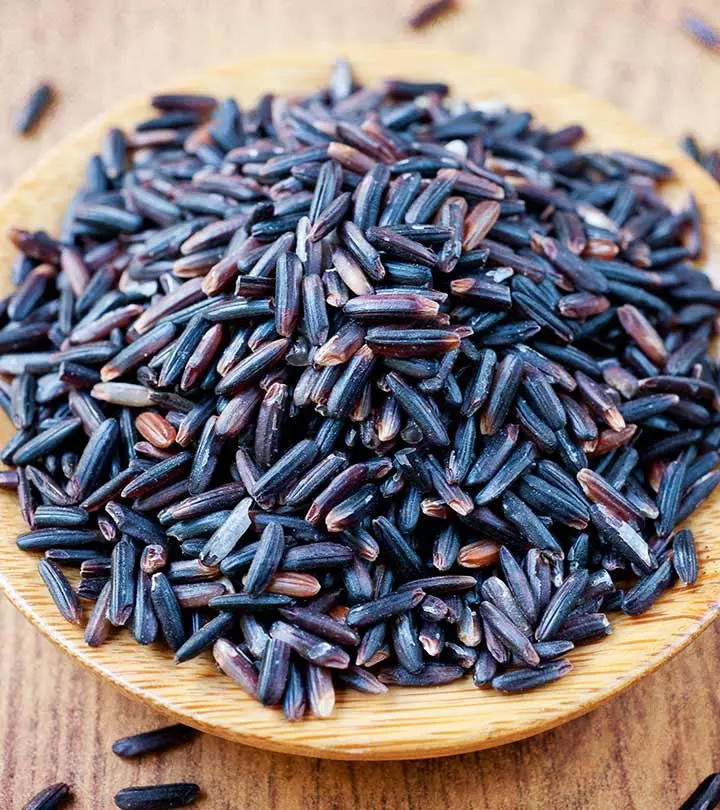

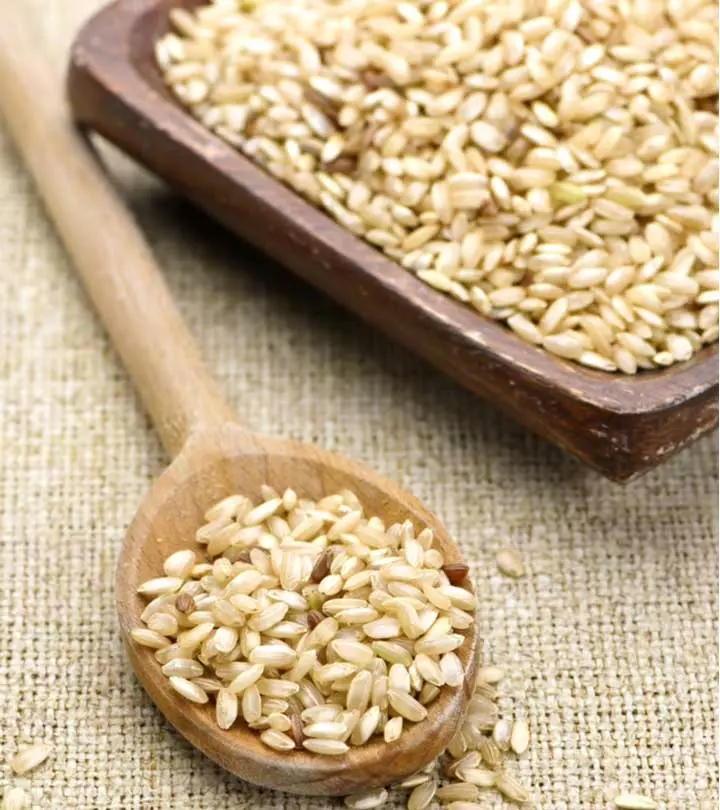

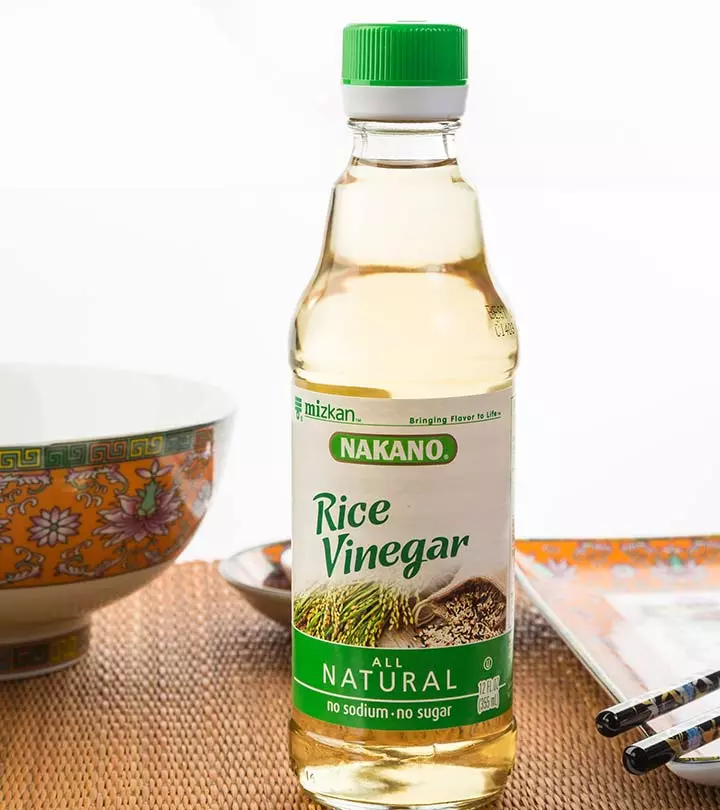
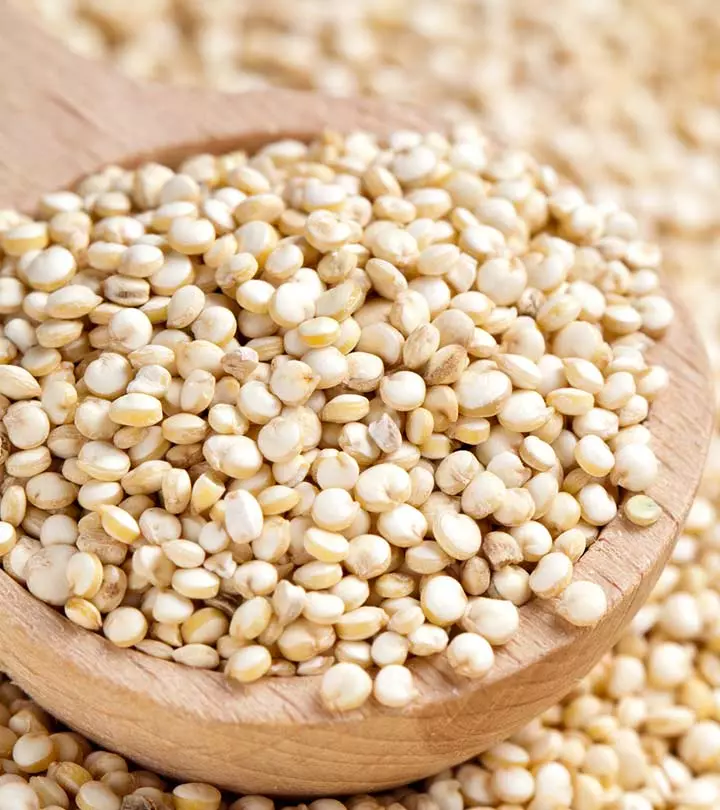
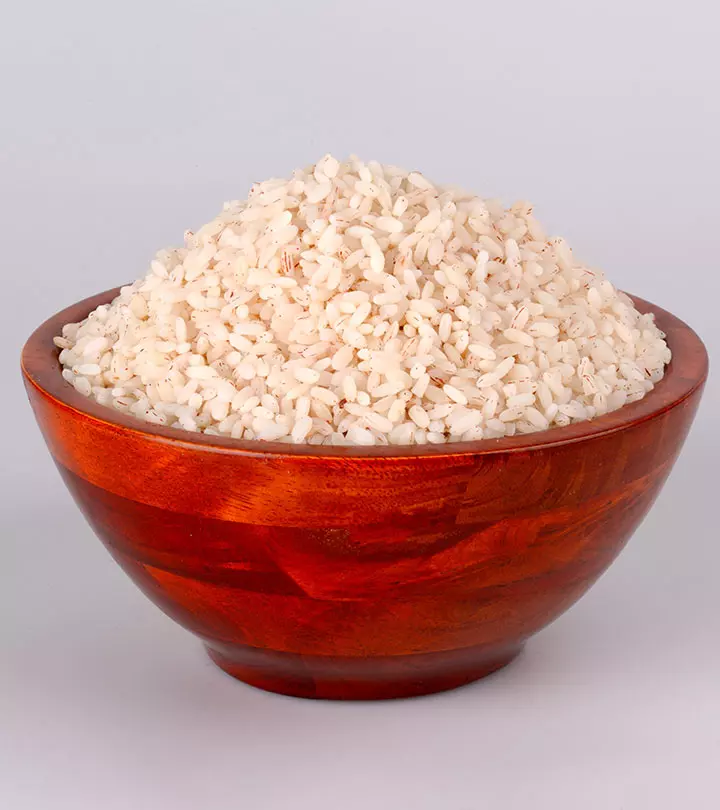





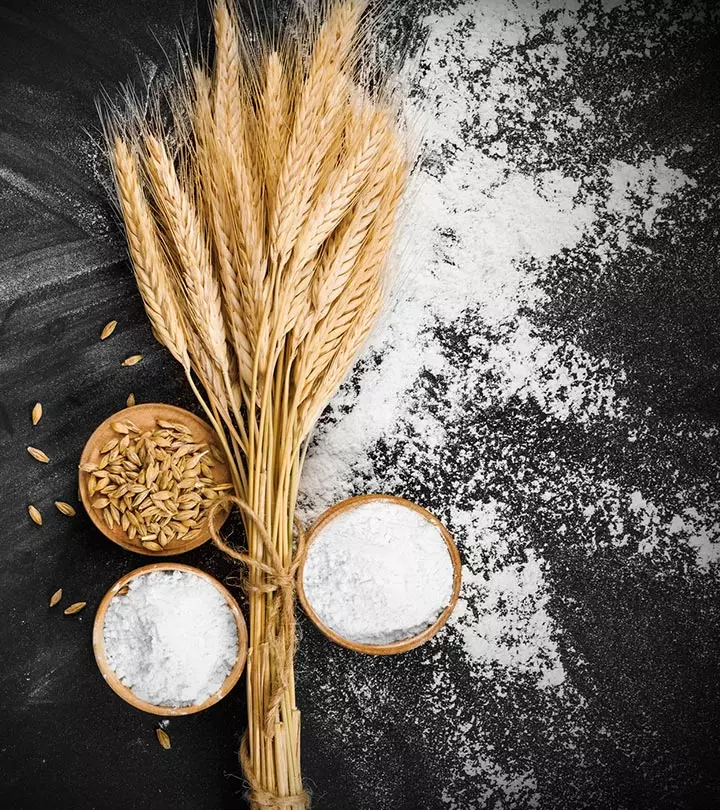






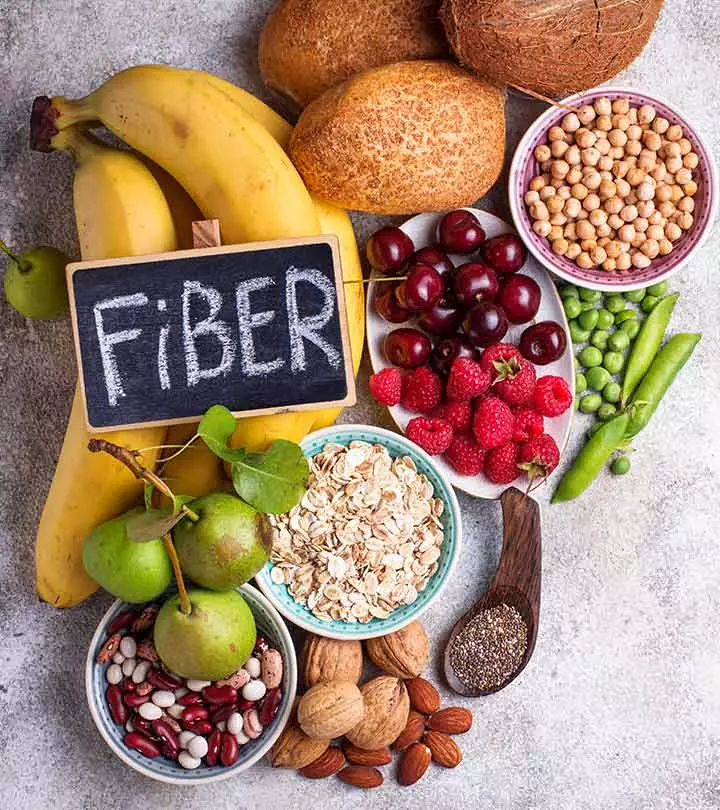

Community Experiences
Join the conversation and become a part of our empowering community! Share your stories, experiences, and insights to connect with other beauty, lifestyle, and health enthusiasts.